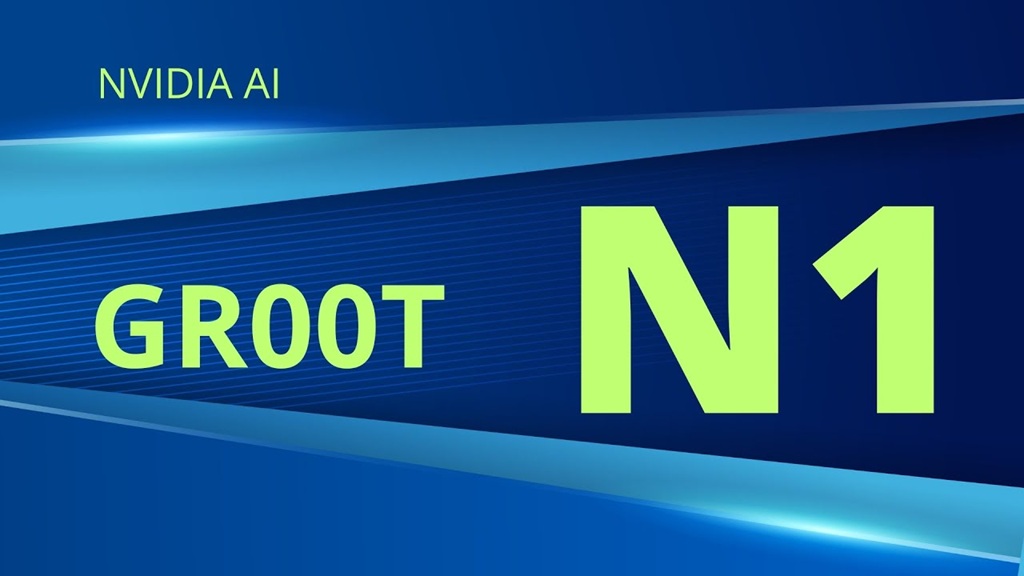
Introduction
NVIDIA has unveiled N1, a foundation model for generalist humanoid robotics. Though relatively small with 2.2 billion parameters, this model required 50,000 GPU hours of training across 1,024 H100 GPUs. What makes N1 remarkable isn’t its size but its innovative architecture—it operates across six different vector spaces, enabling robots to understand visual input, process language instructions, and generate physical actions.
Architecture and Design
NVIDIA’s N1 is a foundation model for generalist humanoid robotics that operates across six distinct vector spaces. Despite having only 2.2 billion parameters (relatively small by modern standards), its innovation lies in how it bridges perception, language understanding, and physical action generation for robots.
The six vector spaces include:
- Visual Embedding Space – Using CLIP 2 visual encoder for image processing
- Linguistic Embedding Space – Using a small LM2 language model
- Unified Mathematical Space – Combining vision and language via the Eagle 2 backbone
- Embodiment-specific State Space – Representing robot’s physical state
- Action Embedding Space – Encoding possible robot actions
- LAPA (Latent Action Pseudo Annotation) Space – Extracting actionable information from videos
Dual-System Architecture
N1 employs a System 1/System 2 approach similar to human cognition:
- System 2: A slower (~10Hz) vision-language model for processing and reasoning
- System 1: A faster (~120Hz) action generation system for real-time motor control
Training and Data Requirements
N1 required substantial computational resources:
- 50,000 GPU hours of training across 1,024 H100 GPUs
- Training data included web data, human videos, synthetic data, and some real-world robot demonstrations
- NVIDIA generated 780,000 simulation trajectories (equivalent to 6,500 hours of movement) in just 11 hours
Key Innovation: LAPA
One of N1’s most significant innovations is the LAPA system, which:
- Uses a Vector Quantized Variational Autoencoder to learn from videos
- Extracts implicit motion information between video frames without explicit robot commands
- Converts video observations into actionable representations for robots
- Creates pseudo-labels for robotic actions by analyzing human movements
Flow Matching for Action Generation
Rather than traditional diffusion models, N1 uses flow matching which:
- Learns a time-dependent vector field that guides noisy action sequences toward meaningful ones
- Requires only four iterations during inference for real-time performance
- Efficiently translates high-level goals into precise motor commands
Operational Workflow
- Robot receives sensory input and language instructions
- Vision-language model interprets the environment and task
- Robot’s current state is encoded
- Diffusion Transformer generates appropriate actions
- Actions are decoded into specific motor commands
- Robot executes commands and the cycle repeats
Limitations and Challenges
- Computationally intensive, requiring specialized hardware
- Heavy reliance on synthetic data may create artifacts
- Uses relatively low-resolution image processing (224×224 pixels)
- Complex body movements require sophisticated recognition and translation
Applications
As a foundation model for humanoid robotics, N1 could potentially be used for:
- General-purpose humanoid robots that can understand natural language instructions
- Robots that can learn new tasks by watching demonstrations
- Systems that bridge the gap between perception and physical action
- Research platforms for advancing embodied AI
N1 represents NVIDIA’s commitment to open foundation models in robotics while showcasing their hardware capabilities. By combining relatively simple mathematical operations across multiple vector spaces, N1 demonstrates an approach to creating robots that can perceive, reason, and act in the physical world.
Video about NIVIDIA N1:
Conclusion
NVIDIA’s N1 represents an interesting approach to generalist humanoid robotics by combining established techniques in a novel way. Its open-source nature makes it accessible for researchers, though its computational requirements remain substantial. While not necessarily groundbreaking in its individual components, N1’s innovation lies in its integration of vector spaces, dual-system architecture, and ability to learn from unlabeled video content.
Key Takeaways
- N1 uses six distinct vector spaces to bridge perception, language, and action
- The LAPA system enables learning from videos without explicit robot commands
- Flow matching provides an efficient approach to action generation
- The model demonstrates how relatively simple mathematical operations across vector spaces can enable complex robotic behaviors
- Despite being open source, N1 requires significant computational resources for deployment


